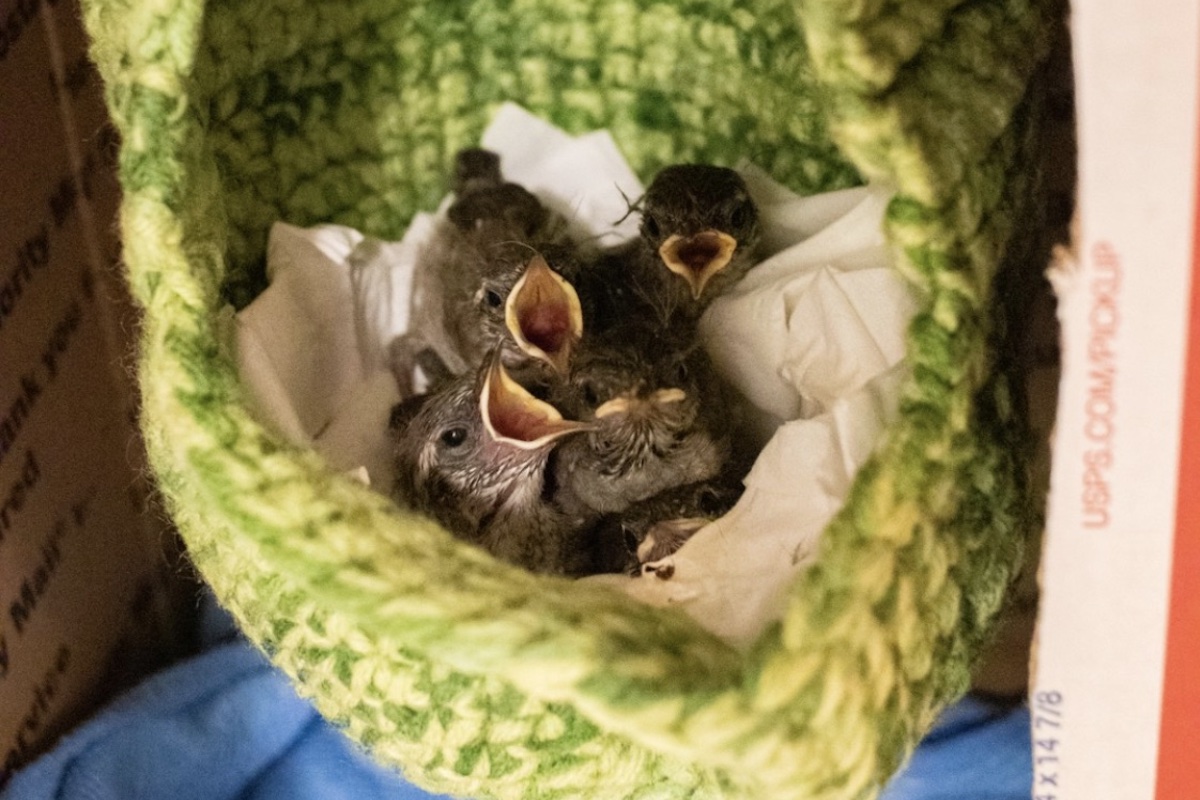Santa Barbara’s New
Wild Animal Hospital
Is a Home of ‘Hopeful Work’
Wildlife Care Network Spreads Its Wings
With State-of-the-Art Facility
By Tyler Hayden | March 16, 2023

Read all of the entries in our “Pets & Animals, 2023 Edition” cover here.
When Ariana Katovich, executive director of the Santa Barbara Wildlife Care Network, says the organization comes from humble beginnings, she means it. It was 1988 when a ragtag group of friends and nature lovers saw the need for wildlife rescue in the area and started caring for sick and injured animals out of their kitchens and bathrooms.
Two decades went by before they were able to find a permanent home in the foothills of Goleta, and even then, the facilities at 1460 North Fairview Avenue consisted of trailers, sheds, and temporary structures that by necessity became permanent. “Everything and everyone was just squished together,” Katovich said.
Nevertheless, thousands of animals on their worst days passed through those doors and left happy and rehabilitated. Fully licensed by the state and powered mainly by volunteers, the Wildlife Care Network grew to become the best known and most respected rescue outfit in the region. The 2018 Holiday Fire, however, prompted some honest reassessment.

When the organization evacuated and relocated to the spacious Humane Society campus for three months, it saw the survival rates of its patients increase. “Just from having more room,” Katovich explained. “We realized it was imperative that we build a new hospital. We knew we could do better.”
Four years and a lot of donor funds later, the Wendy McCaw Wildlife Hospital opened for business. The news flew under the radar, coming as it did when the pandemic was still top of mind, but the impact to the staff, the volunteers, and their charges was immediate. “It’s an absolute game-changer,” Katovich said on a recent tour.
The two-story, 5,400-square-foot building is equipped with all the bells and whistles needed to do the dirty and difficult job of saving wild animals. On the first floor is an exam room, x-ray and surgery suites, ICU, quarantine zone, seabird bay, oil washing and drying stations, mammal center, and songbird nursery. The latter features lighting that mimics the rising and setting of the sun, hand-knit nests suspended in incubators, and an air exchange system strong enough for baby hummingbirds, which respirate a hundred times a minute.
The kitchen is one of the busiest rooms, with constant prep taking place for fish slurries, bug plates, and other specialized meals for the 240-plus different species the organization feeds. On the second floor are staff offices that look into the property’s existing enclosed pools for big birds, like pelicans and cormorants. A little ways away are other elements of the original campus, including the Raccoon Resort and the Harry Potter–inspired Hufflepuff Aviary.
In the coming years, Katovich said, the nonprofit hopes to continue its upgrades with two new enclosures. One would be for raptors, like the hawks that get hit by cars and are regularly brought in by the California Highway Patrol. The other would be for more mammals, including possums, which Katovich thinks get a bad rap. “They’re North America’s only marsupial, and they eat ticks,” she said. “They’re awesome!” She’s also always had a soft spot for crows after she rescued one outside a UCSB dining common as a student.

While 70 percent of the Wildlife Care Network’s intakes are birds, they don’t discriminate against any animal in need. An oiled gopher snake was recently treated, as is the occasional dusky-footed woodrat. Skunks are regulars too, meaning guaranteed incidents of spraying. Luckily, the hospital now features a shower.
But arguably the most exciting addition to their operations, Katovich continued, was the hiring of Dr. Rebecca Aldoretta, a new director of veterinary services. Aldoretta comes to Santa Barbara from Canada’s Prince Edward Island, near where the avian flu that is currently sweeping across the continent was first detected. Her experience with the highly pathogenic strain has already helped the hospital prepare for and protect against infection, Katovich said.
As the only facility of its kind anywhere in Santa Barbara or Ventura counties, and with a coverage zone of Morro Bay to Malibu, the Wildlife Care Network takes its responsibility seriously, Katovich said. The effort can be a grind, especially as we head into spring nesting season and the hospital braces for the inevitable influx of baby critters disturbed from their homes. Dozens of them, every single day.
“These are basically newborns. They need heat, food, and care around the clock,” said Katovich. “We watch their eyes open.” But it’s also the best part of their mission, she explained — saving an animal from certain doom and watching it take flight back into the wild. “The thing I love about the work is it’s very hopeful work,” she said.
To learn more about the Santa Barbara Wildlife Care Network, including volunteer and giving opportunities, visit sbwcn.org. To reach its helpline for wildlife emergencies, rescues, and advice, call (805) 681-1080.




You must be logged in to post a comment.